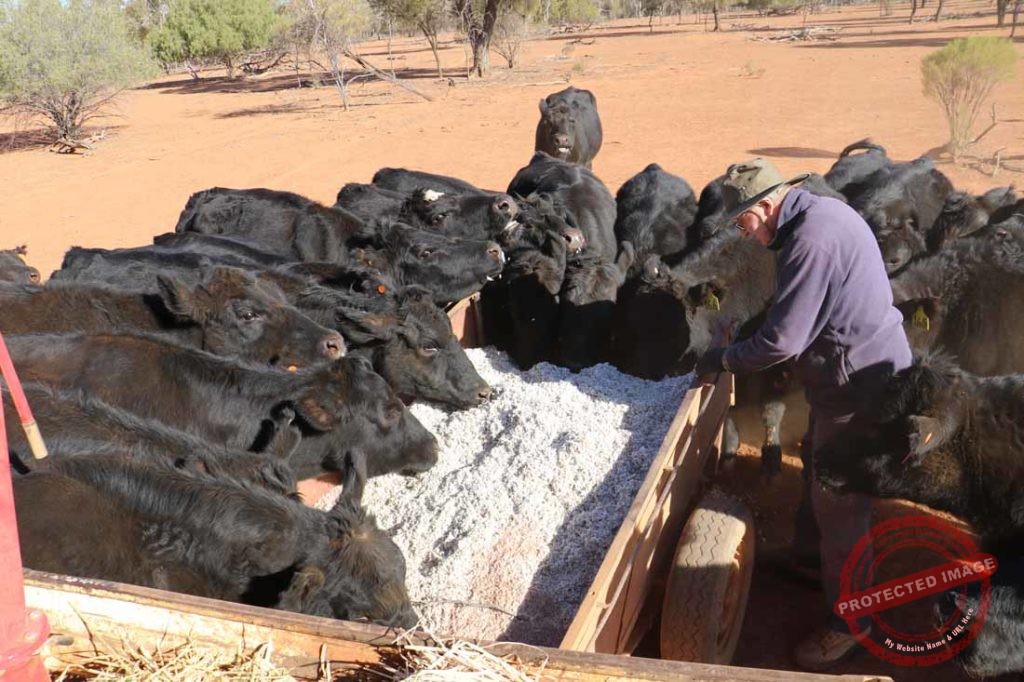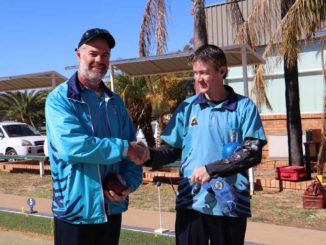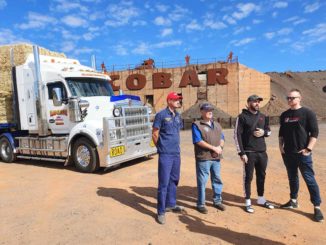
A lot of old farming families in the Cobar district have seen too many droughts in their lifetimes like the current one that’s gripping most of southern Australia.
Tom Mitchell, a second generation grazier at Gambolalley north of Cobar, has experienced his share of droughts (he’s also lived through the good times) but reckons this drought is one of the worst he’s seen in his 79 years.
“It’s as dry as I’ve ever seen it, there’s nothing on the ground whatsoever,” Tom said in an interview with The Cobar Weekly last week.
Tom’s only recorded 24mm of rain this year when, on average, they’d get around 250mm per year.
“I don’t think I’ve seen it worse.
“In 1982 the country was virtually the same, we didn’t have water in 82, but we’ve got a bit of water this time,” Tom said.
“A thunderstorm will top up the water supply, but it doesn’t grow grass. It will take a long time to get grass back on the land.”
Tom, like many local farmers doing it tough, will still tell you that there’s plenty worse off.
He has lived on the family property all his life.
Tom and his wife Faye (along with some help from their son Richard who lives on a nearby property) are currently running 579 head of sheep, cattle and goats.
However that’s only about one tenth of Gambolalley’s 82,000 acre carrying capacity of 5,000 head as Tom said they’ve had to destock to survive this drought.
“We’ve got 186 merino ewes for wool and 150 dorpers for meat, plus 200 farmed goats and 43 head of cattle—angus cows and calves.
“We’re feeding everything; the roos come in as well,” Tom said.
Tom inherited Gambolalley from his parents Charles and Elsie, who first bought a block, Kiana, 80km north of Cobar on the Louth Road, in 1915 and then added a neighbouring block, The Alley, in the 1930s.
“Dad said ‘We’ll take a gamble on The Alley’. That’s how Gambolalley got it’s name,” Tom recalls.
There’s a bore and 23 tanks on Tom’s
property: eight tanks are dry and seven are nearly dry.
“We had some storms at the end of last year that filled the tanks.
“If we hadn’t had that we’d be out of water.
“There’s only four tanks left that have a reasonable amount of water,” he said.
And while there’s no grass on the ground for his stock, Tom said they aren’t dying, although he lost his bull the other day from an unknown cause.
“We were supposed to buy another bull last Wednesday but we didn’t think it was worth bringing another one out here to die.”
The Mitchells have been hand feeding their stock for the past six months.
Tom said they are “making do” with a store of oats they bought 2-3 years ago, along with two loads of cotton seed they’ve bought in the past 12 months.
“You go through it pretty quick,” he said.

“We were also lucky to get some hay donated from the Need for Feed people and we’ve got about four bales left.
“That was very good, very helpful, I wouldn’t knock that back,” he said.
“Some of the hay was not 100 per cent, but the stock will still eat it.
“We’re very, very thankful to get that.”
Tom said feeding his stock has become a full time job.
“That, and looking for water for them.
“It takes three quarters of the day to feed stock and then if they’re not there in the paddock, you have to go and find them.
“The stock chase you as drive out, the poor beggars.
“That doesn’t leave much time to do anything else around the place.”
Tom said when times are better he would be spending most of his days doing improvements like mending fences and clearing fence lines but now any “spare time” is spent cutting mulga scrub with Richard to feed the cattle.
“Goats are the only thing that’s really keeping us going at the moment,” Tom said.
“But they are losing weight as well, living straight off the country. They are going back in condition and bringing in less, as the buyers pay per kilo.”
“We got a bit of carbon farming money on Kiana, that helped out a bit but we’re not getting the sort of big money like you hear some others are,” he said.
“We had a really good year about four years ago and we could put a little bit away.
“Faye used to have a massive garden around the house but that has died but we’ve only got a few fruit trees left. We’re not game to use the water on it. We haven’t put any veggies in this year, we’re conserving water for the stock.
“We don’t waste anything. That’s the only way we can do it as far as I can see,” he said.
Tom doesn’t like to think about what’s going to happen if he doesn’t get good rain soon.
“I’m sick of looking at the long range forecast.”
He said the new Government drought support measures announced last week will be of help, especially the transport subsidy if he has to buy more hay.
He said there’s not much mulga left on Gambolalley and what there is on Rocky Glen is hard to get at. If things do get worse, it means they would need to sell off more of the stock.
“All the male stock would go first, the steers if we can’t keep feeding, the wethers would be the next to go.
“You can’t sell your breeding stock, because then when you go to buy stock again when things are better, they’ll be twice as dear as what you sold them. And they don’t do as near as well as the ones bred on the place, who know where to find the feed. You go downhill very quick, once you loose your breeders, that’s something we don’t want to do.”
The Mitchells have made as many cut backs as they can (their last holiday was six years ago) and Tom said there won’t be any improvements done around the place until things come good again.


